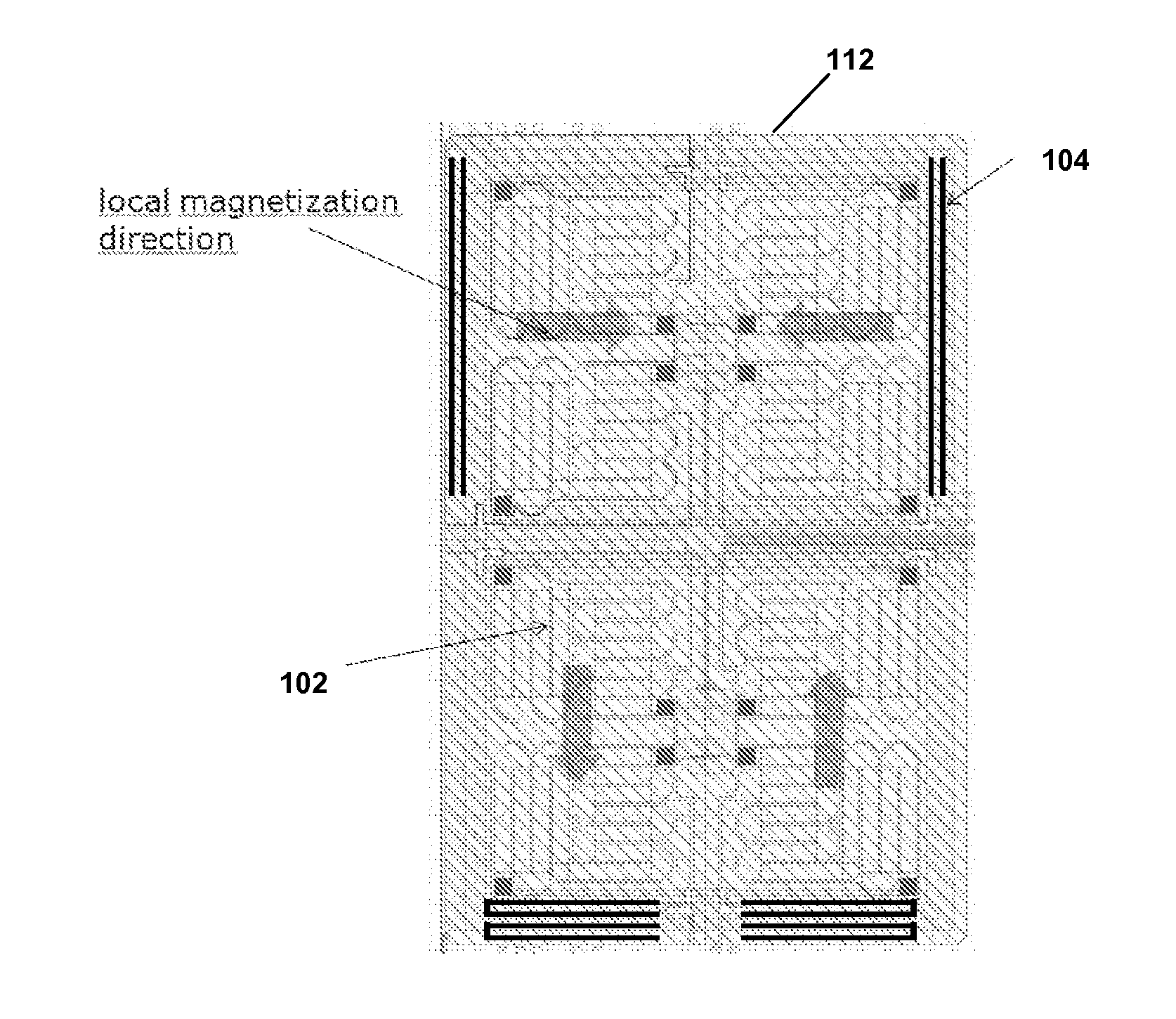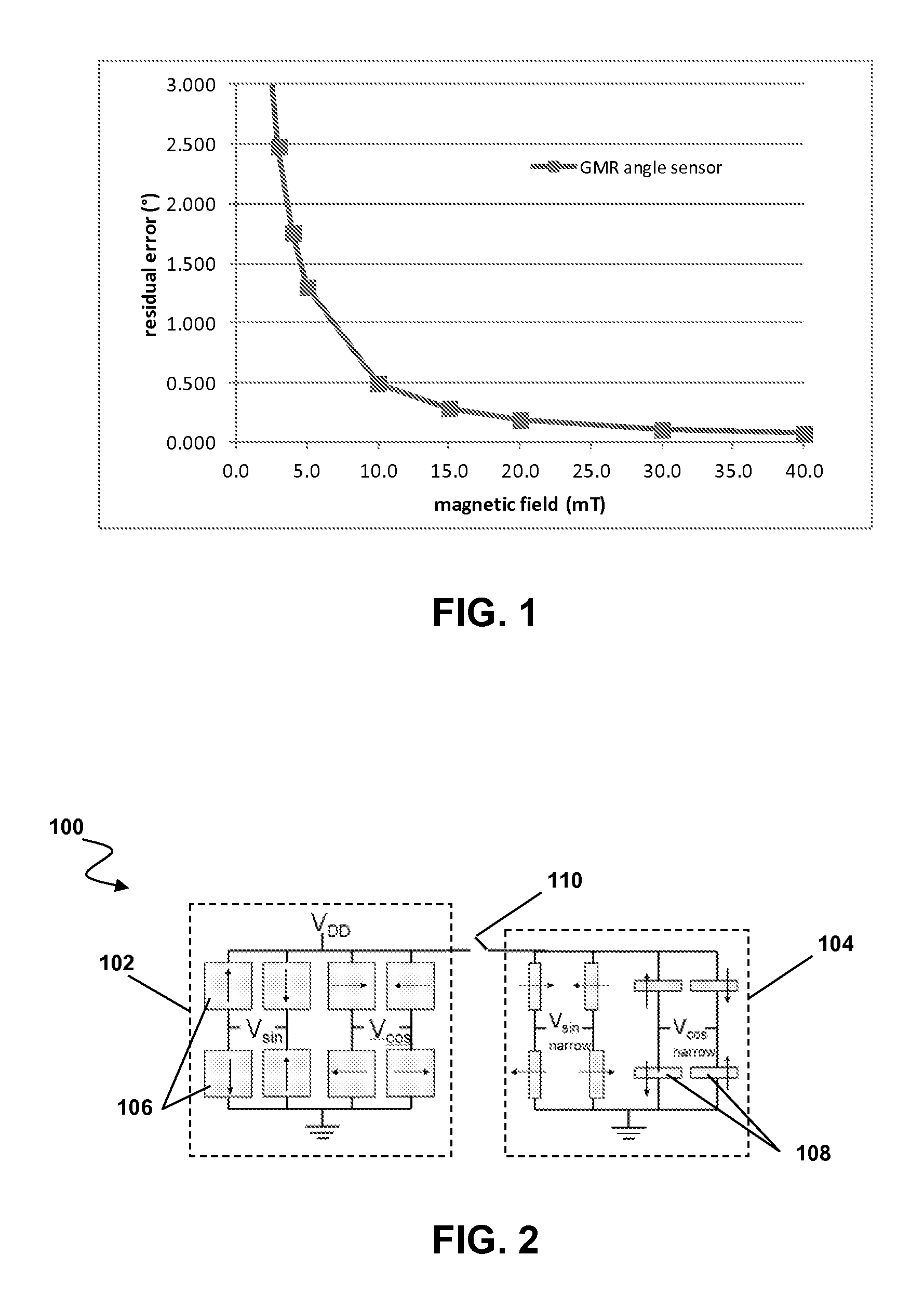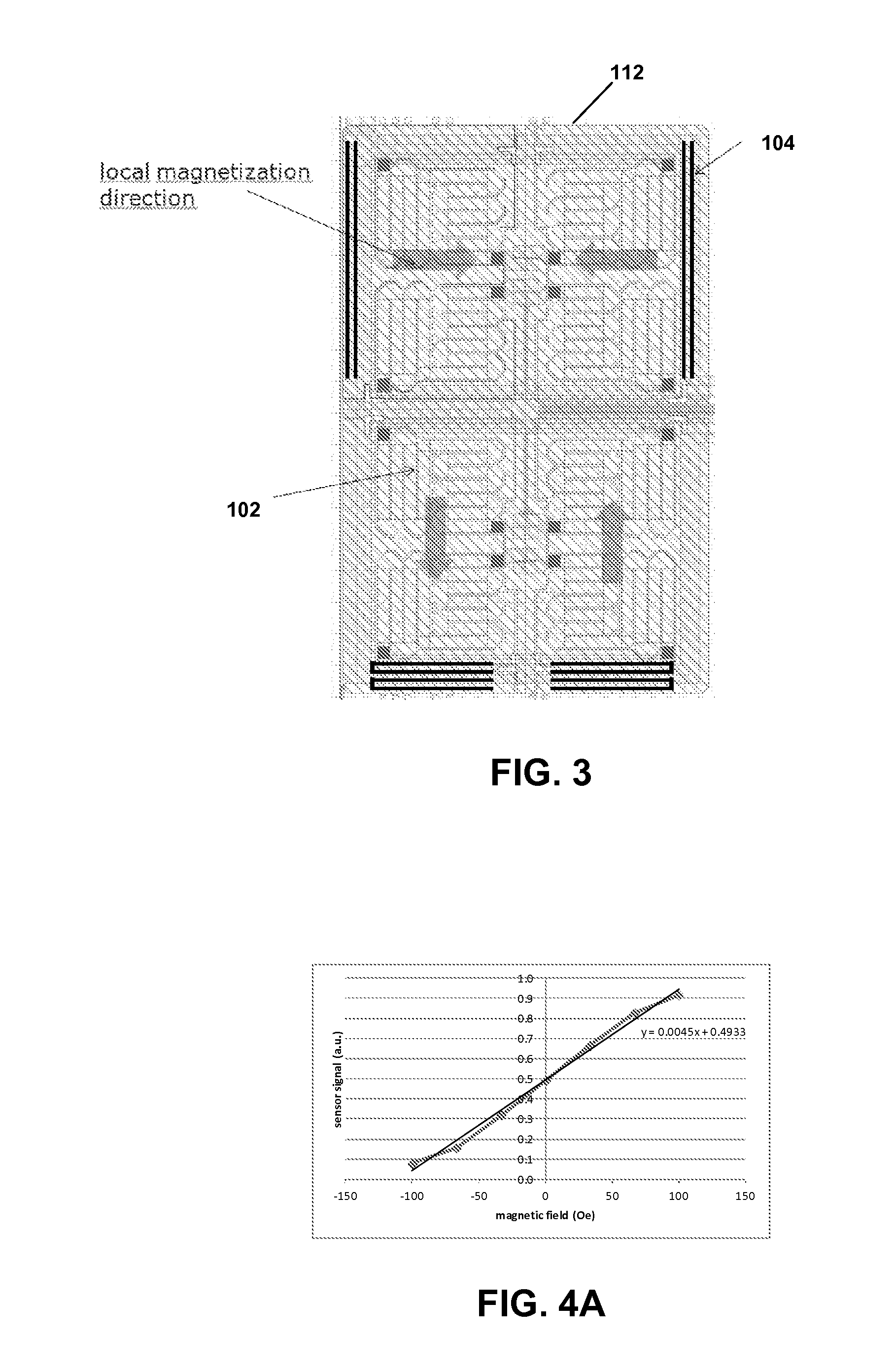Minimum magnetic field detection systems and methods in magnetoresistive sensors
a detection system and sensor technology, applied in the field of magnetoresistive sensors, can solve the problems of not being sensitive to amplitude, increasing angle errors, and vertical hall devices, but not being as sensitive as gmr devices
- Summary
- Abstract
- Description
- Claims
- Application Information
AI Technical Summary
Benefits of technology
Problems solved by technology
Method used
Image
Examples
Embodiment Construction
[0023]Embodiments relate to magnetoresistive sensors suitable for both angle and field strength sensing. In an embodiment, a sensor comprises two different magnetoresistive (xMR) sensor components for sensing two different aspects or characteristics of a magnetic field. In an embodiment, the first xMR sensor component is configured for magnetic field angle or rotation sensing, while the second xMR sensor component is configured for magnetic field strength sensing. In an embodiment, the second xMR sensor component is configured for magnetic field strength sensing in two dimensions. The second xMR sensor therefore can determine, in embodiment, whether the field sensed with respect to angle or rotation by the first xMR sensor component is of sufficient strength or meets a minimum magnitude threshold. If the minimum threshold is not met, an alarm or alert can be provided. An advantage of embodiments, in addition to the ability to sense field strength while also sensing angle or rotation...
PUM
 Login to View More
Login to View More Abstract
Description
Claims
Application Information
 Login to View More
Login to View More - R&D
- Intellectual Property
- Life Sciences
- Materials
- Tech Scout
- Unparalleled Data Quality
- Higher Quality Content
- 60% Fewer Hallucinations
Browse by: Latest US Patents, China's latest patents, Technical Efficacy Thesaurus, Application Domain, Technology Topic, Popular Technical Reports.
© 2025 PatSnap. All rights reserved.Legal|Privacy policy|Modern Slavery Act Transparency Statement|Sitemap|About US| Contact US: help@patsnap.com



